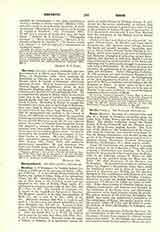

Hesebon (A. V.HESHBON; Gr. Esebon, Esbous; Lat. Esbus), a titular see of the province of Arabia, suffragan of Bostra. It is the ancient Hesebon beyond the Jordan, the capital of Sehon, King of the Amorrhites (Num., xxi, 26). Hesebon was taken by the Israelites on their entry to the Promised Land, and was assigned to the tribe of Ruben (Num. xxxii, 37); afterwards it was given to the tribe of Gad (Jos., xxi, 37; I Par., vi, 81). The Canticle of Canticles (vii, 4) speaks of the magnificent fish-pools of Hesebon. The Prophets mention it in their denunciations of Moab (Is., xv, 4, xvi, 8, 9; Jer., xlviii, 2, 34, 45). Alexander Jannaeus (106-79 B.C.) took it, and made it a Jewish town, and Herod established a fort there (Josephus, Ant., XV, viii, 5). It occurs in Josephus very often under the form Esbonitis or Sebonitis (Antiq., XIII, xv, 4., XII, iv, 11; Bell. Jud., II, xviii, 1). After the Jewish War (A.D. 68-70) the country was invaded by the tribe that Pliny calls (Hist. Nat., V, xii, 1) Arabes Esbonitae. Restored under the name of Esbous or Esbouta, it is mentioned among the towns of Arabia Petraea by Ptolemy (Geogr., V, xvi). Under the Byzantine domination, as learned from Eusebius (Onomasticon), it grew to be a town of note in the province of Arabia; George of Cyprus refers to it in the seventh century, and it was from Hesebon that the milestones on the Roman road to Jericho were numbered.
Christianity took root there at an early period. Lequien (Oriens Christ., II, 863-64), and Gams (Series piscoporum, 435) mention three bishops between the fourth and seventh centuries. Gennadius, present at Nicaea (Gelzer, Patrum Nicaen. Nomina, p. lxi); Zosius, whose name occurs in the lists of Chalcedon, and Theodore, champion of orthodoxy against Monothelism, who received (c. 649) from Martin I a letter congratulating him on his resistance to the heresy and exhorting him to continue the struggle in conjunction with John of Philadelphia. To the latter the pope had entrusted the government of the patriarchates of Antioch and Jerusalem. Eubel (Hierarchia Catholica, II, 168) mentions two Latin titulars of Hesebon in the latter part of the fifteenth century. At the beginning of the Arab domination Hesebon was still the chief town of the Belka, a territory corresponding to the old Kingdom of Sehon. It seems never to have been taken by the Crusaders. The ruins are to be seen at Hesban, to the north of Madaba, on one of the highest summits of the mountains of Moab.
S. SALAVILLE

